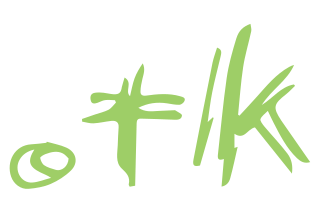Various anti-spam techniques are used to prevent email spam.

.tk is the Internet country code top-level domain (ccTLD) for Tokelau, a territory of New Zealand in the South Pacific.

ClamAV (antivirus) is a free software, cross-platform antimalware toolkit able to detect many types of malware, including viruses. It was developed for Unix and has third party versions available for AIX, BSD, HP-UX, Linux, macOS, OpenVMS, OSF (Tru64), Solaris and Haiku. As of version 0.97.5, ClamAV builds and runs on Microsoft Windows. Both ClamAV and its updates are made available free of charge. One of its main uses is on mail servers as a server-side email virus scanner.
Norton Internet Security, developed by Symantec Corporation, is a discontinued computer program that provides malware protection and removal during a subscription period. It uses signatures and heuristics to identify viruses. Other features include a personal firewall, email spam filtering, and phishing protection. With the release of the 2015 line in summer 2014, Symantec officially retired Norton Internet Security after 14 years as the chief Norton product. It was superseded by Norton Security, a rechristened adaptation of the Norton 360 security suite.
Anti-phishing software consists of computer programs that attempt to identify phishing content contained in websites, e-mail, or other forms used to accessing data and block the content, usually with a warning to the user. It is often integrated with web browsers and email clients as a toolbar that displays the real domain name for the website the viewer is visiting, in an attempt to prevent fraudulent websites from masquerading as other legitimate websites.
DNS spoofing, also referred to as DNS cache poisoning, is a form of computer security hacking in which corrupt Domain Name System data is introduced into the DNS resolver's cache, causing the name server to return an incorrect result record, e.g. an IP address. This results in traffic being diverted to any computer that the attacker chooses.

Windows Internet Explorer 7 (IE7) is a web browser for Windows. It was released by Microsoft on October 18, 2006. It is part of a long line of versions of Internet Explorer and was the first major update to the browser. It does not support earlier versions of Windows.
SpamCop is an email spam reporting service, allowing recipients of unsolicited bulk or commercial email to report IP addresses found by SpamCop's analysis to be senders of the spam to the abuse reporting addresses of those IP addresses. SpamCop uses these reports to compile a list of computers sending spam called the "SpamCop Blocking List" or "SpamCop Blacklist" (SCBL).
DomainKeys Identified Mail (DKIM) is an email authentication method designed to detect forged sender addresses in email, a technique often used in phishing and email spam.

OpenDNS is an American company providing Domain Name System (DNS) resolution services—with features such as phishing protection, optional content filtering, and DNS lookup in its DNS servers—and a cloud computing security product suite, Umbrella, designed to protect enterprise customers from malware, botnets, phishing, and targeted online attacks. The OpenDNS Global Network processes an estimated 100 billion DNS queries daily from 85 million users through 25 data centers worldwide.
Website spoofing is the act of creating a website with the intention of misleading readers that the website has been created by a different person or organization. Normally, the spoof website will adopt the design of the target website, and it sometimes has a similar URL. A more sophisticated attack results in an attacker creating a "shadow copy" of the World Wide Web by having all of the victim's traffic go through the attacker's machine, causing the attacker to obtain the victim's sensitive information.

hMailServer was a free email server for Windows created by Martin Knafve. It ran as a Windows service and includes administration tools for management and backup. It had support for IMAP, POP3, and SMTP email protocols. It could use external database engines such as MySQL, MS SQL or PostgreSQL, or an internal MS SQL Compact Edition engine to store configuration and index data. The actual email messages were stored on disk in a raw MIME format. As of January 15th, 2022, active support and development were officially halted, although version 5.6 will continue to receive updates for critical bugs.

Sourcefire, Inc was a technology company that developed network security hardware and software. The company's Firepower network security appliances were based on Snort, an open-source intrusion detection system (IDS). Sourcefire was acquired by Cisco for $2.7 billion in July 2013.
DNS hijacking, DNS poisoning, or DNS redirection is the practice of subverting the resolution of Domain Name System (DNS) queries. This can be achieved by malware that overrides a computer's TCP/IP configuration to point at a rogue DNS server under the control of an attacker, or through modifying the behaviour of a trusted DNS server so that it does not comply with internet standards.

VirusTotal is a website created by the Spanish security company Hispasec Sistemas. Launched in June 2004, it was acquired by Google in September 2012. The company's ownership switched in January 2018 to Chronicle, a subsidiary of Google.

WOT Services is the developer of MyWOT, an online reputation and Internet safety service which shows indicators of trust about existing websites. The confidence level is based both on user ratings and on third-party malware, phishing, scam and spam blacklists. The service also provides crowdsourced reviews, about to what extent websites are trustworthy, and respect user privacy, vendor reliability and child safety.
Immunet was a free, cloud-based, community-driven antivirus application, using the ClamAV and its own engine. The software is complementary with existing antivirus software. In January 2011 Immunet was acquired by Sourcefire.
Trojan.Win32.DNSChanger is a backdoor trojan that redirects users to various malicious websites through the means of altering the DNS settings of a victim's computer. The malware strain was first discovered by Microsoft Malware Protection Center on December 7, 2006 and later detected by McAfee Labs on April 19, 2009.

Quad9 is a global public recursive DNS resolver that aims to protect users from malware and phishing. Quad9 is operated by the Quad9 Foundation, a Swiss public-benefit, not-for-profit foundation with the purpose of improving the privacy and cybersecurity of Internet users, headquartered in Zürich. Quad9 is entirely subject to Swiss privacy law, and the Swiss government extends that protection of the law to Quad9's users throughout the world, regardless of citizenship or country of residence.
Cisco Talos, or Cisco Talos Intelligence Group, is a cybersecurity technology and information security company based in Fulton, Maryland. It is a part of Cisco Systems Inc. Talos' threat intelligence powers Cisco Secure products and services, including malware detection and prevention systems. Talos provides Cisco customers and internet users with customizable defensive technologies and techniques through several of their own open-source products, including the Snort intrusion prevention system and ClamAV anti-virus engine.









